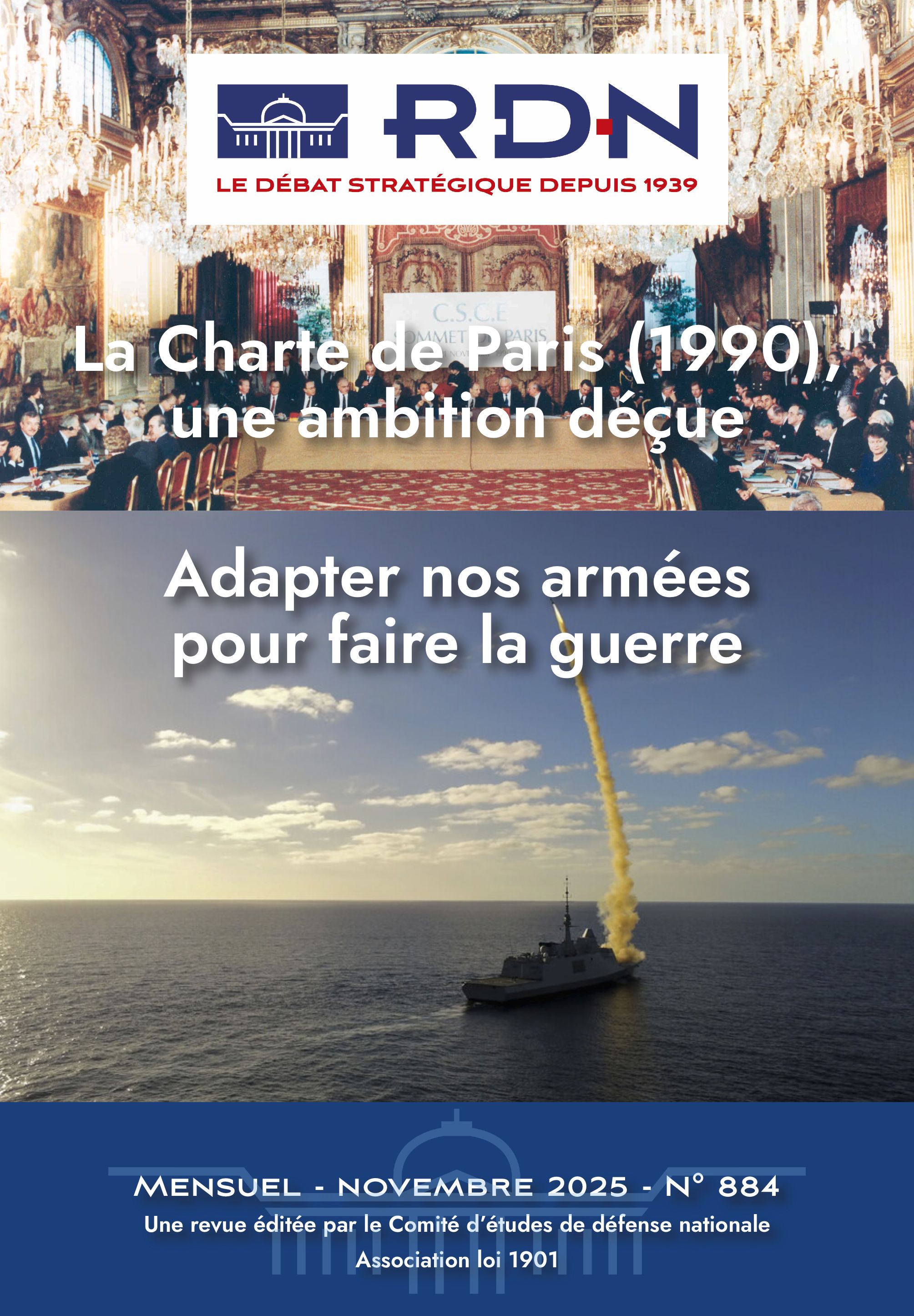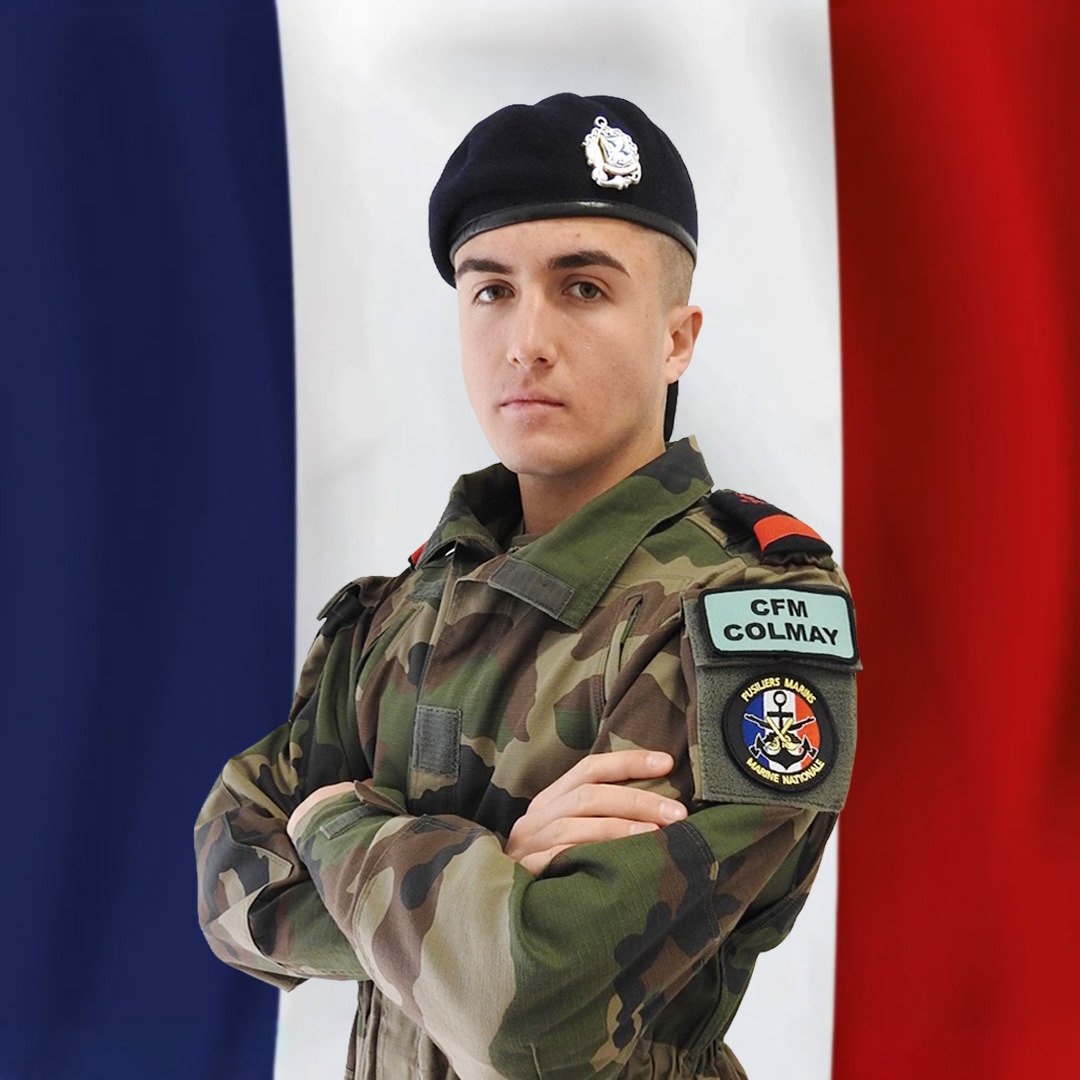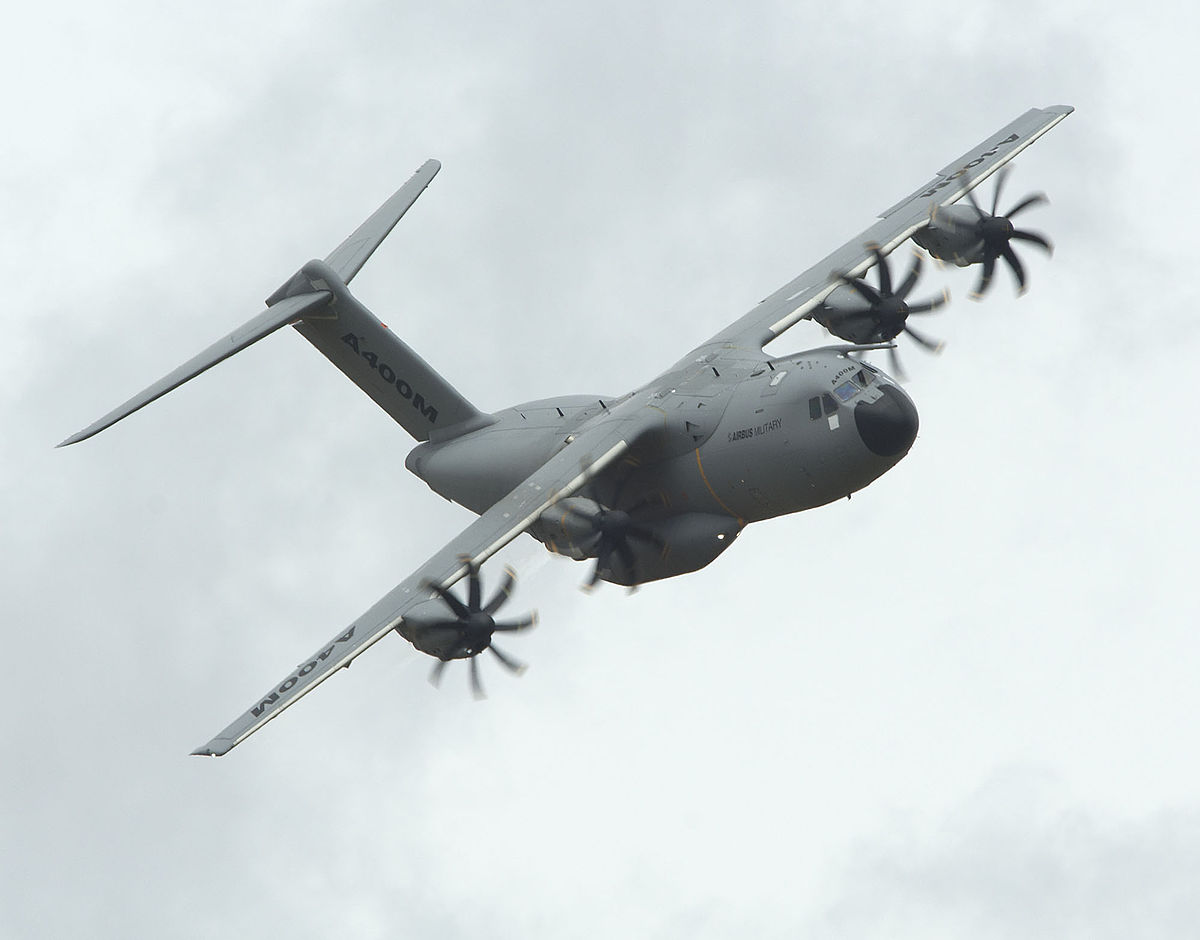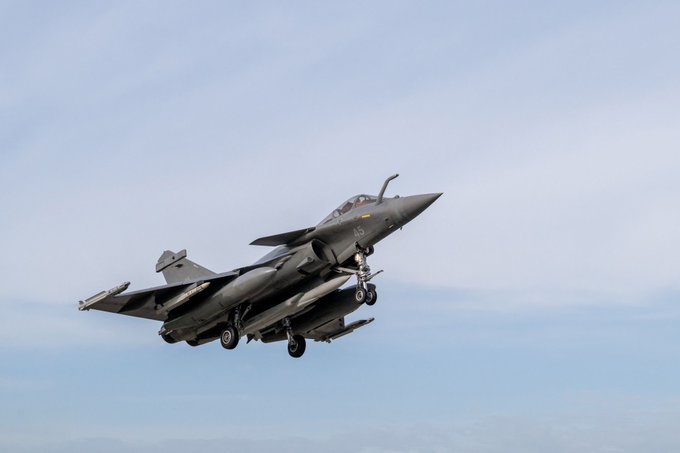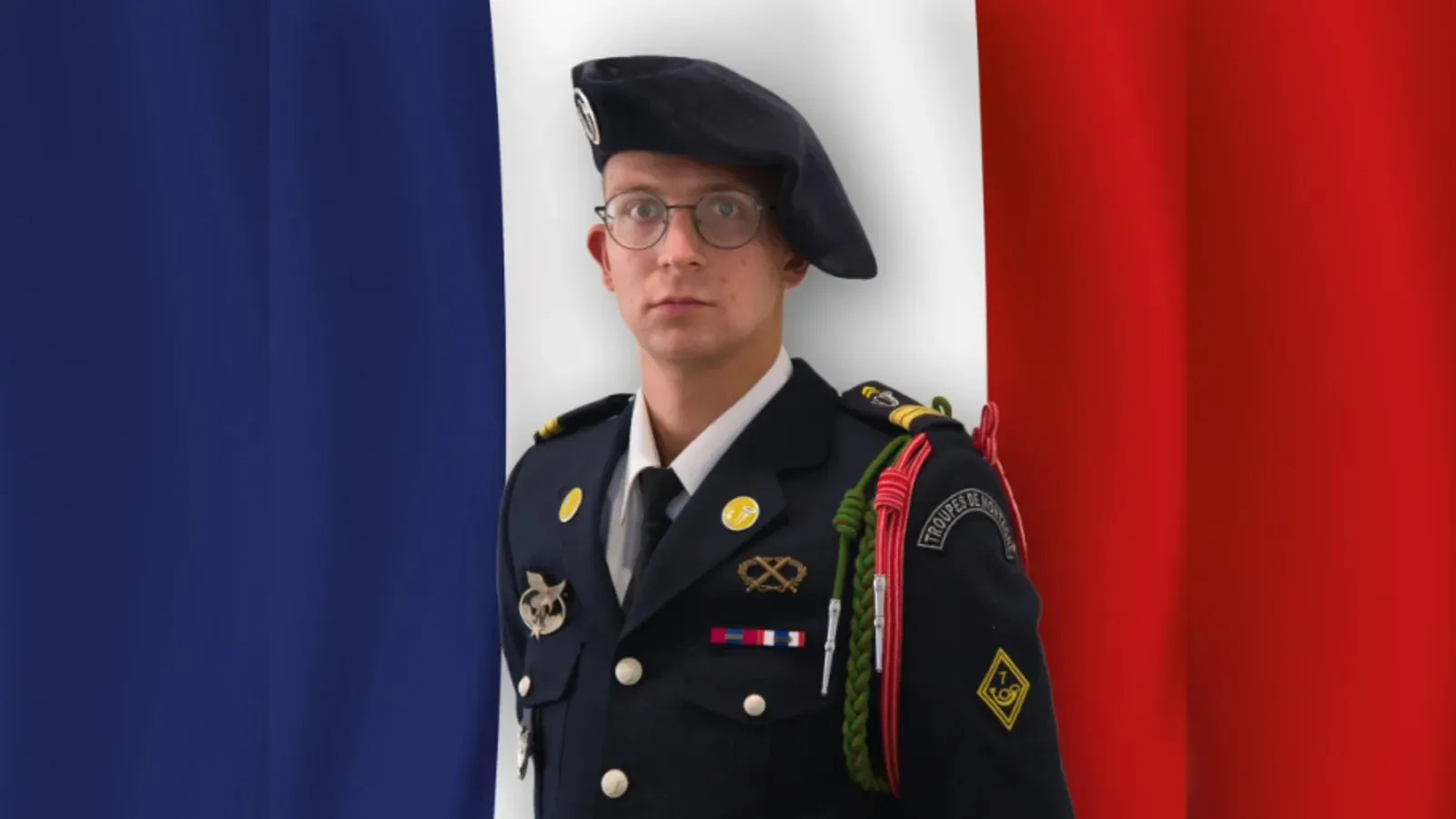Abstracts
Articles in the French edition of RDN this month
Space assets in national defence: the changing face of warfare - Gilles Lemoine
In his introduction to the theme of the forthcoming show at Le Bourget, that of space in the service of operations (Space for Operations), the author describes the degree to which space has become a field for military operations and how it is being integrated into manoeuvres from the politico-military strategic level to the tactical level.
Operational togetherness - Bertrand Houitte de la Chesnais
The author puts the spotlight on the transformation of our defence establishment to show the moves that are currently taking place. For the forces in particular, he highlights the importance of integration, modernisation and rationalisation of our military assets. The daily challenges for those who are driving these changes include safeguarding the operational relevance of forces widely deployed in the field and the step-by-step resolution of all difficulties that arise.
The Ministry of Defence at Balard - Bruno Vieillefosse
Balard, in Paris, is the flagship project and symbol of the modernisation of the Ministry of Defence and the forces in general, if not the be-all and end-all. It is not a question of downsizing and undoing what already exists, but more of constructing something new for our defence structure that is more efficient, more concentrated and, of course, more modern.
Aerospace power - Jean-Paul Paloméros
Aerospace assets, and the power they afford, have become a vital instrument of sovereignty and crisis management, and a visible political tool of the first order for our country when we choose to commit forces anywhere in the world at short notice in highly visible, yet unpredictable situations.
What does ‘joint’ really mean? - Paul Massart
The moves towards ‘jointery’ that began some 20 years ago have drifted between several different styles and plans, including side-by-side and fully integrated joint structures. The author outlines a kind of middle way that preserves the identity of each of the arms, which stemms largely from the environment in which it operates, yet combines the faculties essential to joint manoeuvres. He sets his limits at the level of human resources and initial training.
Recruitment: a challenge for the forces - Marc-Olivier Crossonneau
Professional forces need a constant flow of quality people that they can recruit into military life. In today’s competitive world the recruiting services have the difficult task of supplying enough dynamic and well-trained young people to demanding armed forces which, in reality, will not retain them all for one reason or another. An essential element is a good communication strategy and the attention given to highlighting the attractiveness of the profession. Resolving such challenges is central to the transformation of the forces.
The forces and society - Olivier Lajous
How the armed forces fit into the institutions of the Republic and French society in general, and how they are seen to serve the country’s interests is not always easy to explain, and yet it has often been necessary to do so throughout the country’s history. The author takes a look at how this should be done in today’s social climate.
New areas of conflict: a four-dimensional contest - Frédéric Charillon
The current fog of war and the difficulty in maintaining the peace that we enjoy at the beginning of the 21st century result in an overlap and combination of four conflicting elements: physical, political, social and symbolic. It is the contest between these elements that creates the complexity of today’s conflicts.
New areas of conflict - Thierry Garcin
The past 20 years have been notable for the level of conflict affecting principally weak, failing or failed states. This sharp retrospective looks at how claims relating to ethnic identity, which transcend frontiers, have been superimposed on conventional state against state conflicts to leave the international community worse off as a result.
Emerging powers and the G20 – dancing to whose tune? - Patrick Allard and Christian Lechervy
The opening up of the G8 to include emerging powers has not resulted in better collective responsibility within this select club of administrators of the international community. Each new member has brought to the table its own particular slant on things, which has worsened an already fragmented situation and done nothing to improve world governance in economic and financial matters in particular. Far from uniting the planet, the G20 remains a self-satisfying group that is incapable of taking into account the interests of the greater majority.
Defending the blue planet - Emmanuel Desclèves
This new century belongs to the ocean, says the author. The ocean is a common resource for all humanity and in it lies the future of our blue planet. It is being progressively domesticated and inhabited, and is taking over from the land as provider of our wealth and carrier of our essential materials. Much coveted, it has to be regulated and defended.
Are we going to Sedan? - Jean Fleury
The author highlights the limits of the commercial model in the administration of the armed forces, particularly when it is remembered that the endgame for the forces is to win battles. To do the latter, three essential principles have to be followed that do not necessarily correspond with industrial management: team spirit, subordination to command and combined training of operational personnel with their supporting units.
Buying defence at twenty billion euros - Aymeric Moullart de Torcy
The author pulls no punches in his look at the shrinking format of the armed forces under the effects of technological demands and budget constraints. This process demands that choices and decisions be made calmly, and that the future shape of the integrated forces reflect the effort that the country wishes to expend on its defence – and the country only has 20 billion euros to spend.
An overall strategy for cyber space – Vincent Sébastien
Cyber space has become a field of operations that mixes economic interest with concerns for national and collective security. It is also a rapidly expanding field that needs to be kept under control by some form of dedicated, yet overall, national strategy that is closely coordinated with greatly developed European cooperation.
Conducting the mission in Afghanistan - Jean-François Hogard
Feedback from task force la Fayette’s winter manoeuvres on how to plan, launch and conduct a peacekeeping operation in hostile territory.
What strategy for the Afghan war? - Jean-Pierre Steinhofer
Even after ten years of war, the NATO-led coalition has still not clearly defined its enemy nor has it really clearly stated its strategic objectives. As a result, current strategy is, to say the least, uncertain.
A practical approach to command - Marc Imbeault and Michel Maisonneuve
This second part of the Canadian study of command exposes the peculiar mixture of head and heart that links the leader and his men, and organises their hierarchical relationship that shapes obedience for the common good.
European structures and a view of the Weimar triangle - Jean-Christophe Romer
The structure of European security has within it some highly original aspects, the twenty-year-old Weimar Triangle being one of them. At Polish instigation, it could possibly find renewed relevance today through being extended to Moscow. Were this to be so, a new and broad pan-European security structure could be created.
The end of the WEU and an inter-parliamentary future - André Dumoulin
The Western European Union is on its way out. It has played a decisive role in several episodes of the construction of Europe and its common destiny, maintaining a firm approach to questions of security and defence. The WEU’s heritage is seen today in the CSDP and the discussion that surrounds it, but has left aside European parliamentary aspects.
Maurice Nahmias: a man at the origin of French deterrent strategy - Philippe Wodka-Gallien
Maurice Nahmias was a student in the USA before the war, and later, from December 1945, was an assistant of Joliot-Curie. He closely observed the shake-up resulting from the introduction of the atomic bomb and outlined what was to become deterrence of war by terror. Although today forgotten, the explanations he offered of the coming nuclear era at the time in the magazine Science et Vie remind us that the France of 1939 was one of the pioneering countries in atomic matters and that its march towards becoming a nuclear power had nothing to do with chance.

